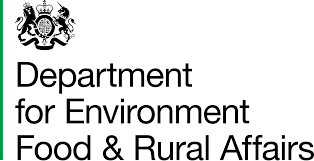HISTORIC PRESS RELEASE : £68 million boost for innovative local public services projects [March 2002]
The press release issued by HM Treasury on 20 March 2002.
New projects to create safer schools and hospitals, help find missing persons, deal with abandoned vehicles, provide an electronic adviser for young people, and to deliver flood warnings by e-mail and text message are among 75 local and national partnership schemes awarded a total of £68 million under the Invest To Save Budget (ISB) initiative, Treasury Chief Secretary Andrew Smith announced today.
Announcing the awards, Mr Smith said :
“These projects offer exciting and innovative ways of working and delivering better public services directly to users at local level across the country. They offer benefits for young and old, individuals and businesses, and for whole communities. I am particularly pleased that voluntary and community sector bodies are leading projects in this year’s awards for the first time.
“In most cases these projects will initially deliver benefits locally, but we expect them to identify new and better ways of working which can be adopted and adapted in all communities.
“But ISB is about more than just investing now to help current service users. It is also about improved efficiency and effectiveness generating savings to help fund further improvements and keep costs down for the taxpayer in the future.”
Cabinet Office Minister Lord Macdonald said :
“I congratulate all these projects for taking the initiative to work with others to make a difference. Improving public service delivery is the priority for this Government and these projects offer considerable potential in terms of both better services to the public and more efficient management of public resources. They are innovative, but this innovation is placed alongside effective approaches to risk identification and management.”
ISB is a joint Treasury and Cabinet Office initiative that provides support for projects that involve two or more public bodies working together to deliver services that are innovative, locally responsive and more efficient. ISB will have provided about £380 million to such schemes by the end of 2003-2004.
The 75 projects receiving new funding this year include :
Showcase Hospitals and Schools : a project to reduce violent and property crime through an integrated approach to safety and security in at least four showcase schools and three showcase hospitals across England and Wales. It will make use of existing and emerging technologies to make hospitals and schools a safer and more secure environment for staff, patients and pupils, reduce the fear of crime, and improve the quality of service provided in ways which can be implemented in all schools and hospitals.
Missing persons project : a Home Office led project to develop and deliver a comprehensive and cohesive system and strategy for dealing with missing persons, including the integration and updating of information technology systems between police, local authorities and voluntary sector and community bodies across the country.
Abandoned vehicle project : proposed by Sussex Police, this project aims to help local authorities remove abandoned vehicles from streets and public places more swiftly, saving significant amounts of tax and community charge costs and tackling a root cause of social problems and blight in local communities.
“E-Pal” : a project to provide an on screen or text messaging electronic or virtual personal adviser to offer advice and guidance to young people, help with job applications, access work placements and identify suitable training opportunities. E-Pal, created by a leading edge professional games software house, will contain input from local employers, trainers and educators as well as being linked into national schemes such as Connexions Direct and Learn Direct.
Severe Weather Warnings, Informing the Public : a project linking the Environment Agency, the Meteorological Office and Redcar and Cleveland Borough Council to provide advance public warning and information systems for severe weather (including flooding) via multi-media communication including e-mail, internet, SMS text messaging, digital TV, mobile and fixed telephones and fax



